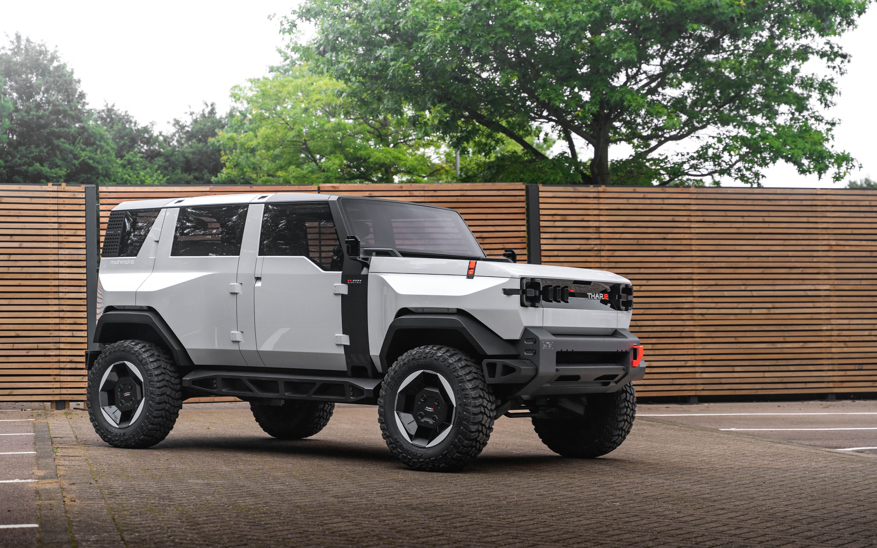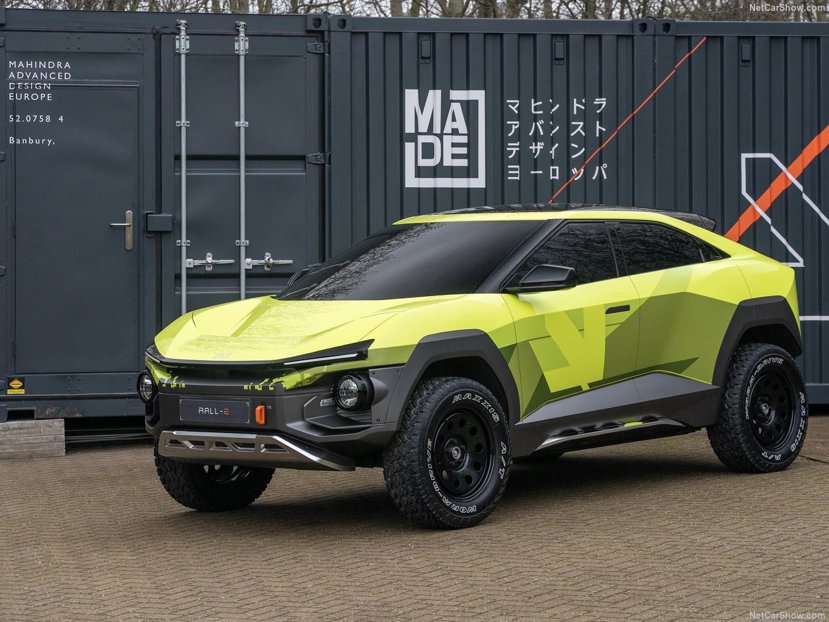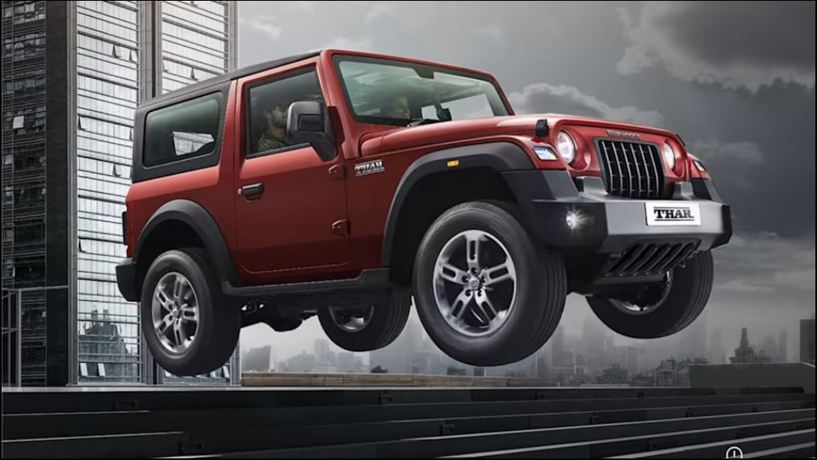Mahindra is known for its incredibly tough 4x4 vehicles – primarily ladder-frame chassis SUVs and utes that can cope with rugged roads and extreme off-tarmac use. Mountain-goat machines.

Yet it’s also committed to a future of bespoke “BE” battery electric vehicles (BEVs) on its new Inglo platform, created using components from Volkswagen’s ID range; it has already teased five new BEVs to come over the next few years, all around a crossover-SUV theme.
So the burning question might be: how do you make an authentic 4x4 on a BEV platform that matches current ladder-frame models for heavy-duty off-road use? Is that even possible?
The answer is yes and the company revealed proof of concept this week in the form of the Thar.e, a pure-electric stablemate for its current Thar (essentially Mahindra’s version of the Jeep Wrangler).
The Thar.e showcases a radical new design direction, but the key thing about the model is what’s underneath: a 4x4 version of Mahindra’s Inglo BEV platform.

Thar.e was unveiled alongside a new global ute concept this week in South Africa, at Mahindra’s Futurescape event, by the company’s automotive division president Veejay Nakra and technology and product development boss R Velusamy.
Both spoke with a small group of New Zealand media earlier this month (just ahead of the Futurescape event) about the importance of keeping Mahindra’s 4x4 credentials in an electric-vehicle world. While many of their comments were deliberately non-specific – Thar.e was not revealed at the time - they provide valuable insight about the drive to bring Inglo together with true 4x4 ability.
“In the EV world, 4WD is something that a lot of customers will be looking for,” says Veejay Nakra. “We [Mahindra] will keep the heritage of who we are as authentic SUV players; I think one core decision we took as an organisation is to be true to who we are, to make authentic SUVs. That’s what we want to do in ICE and EV.

“Of the products that we have with the BE vision so far – you can see the Rally BE.05 is something that’s a distinct and authentic SUV, for example.”
In fact, with pure-electric power, a traditional ladder-frame platform is not necessarily the strongest or most practical option, says Velusamy: “In the chassis, what is very important is the ground clearance. When you have a chassis, it has a height of [say] 190mm, then the floor is also on top.
“Typically, the frame and sill needs to be the ground clearance. When you have a frame, it has a certain size section. What is left is the space you have for batteries. So then you have limited the space for batteries… it’s a small area”.
Velusamy says that with a BEV platform, the battery can form an integral part of the chassis: “The battery pack is very strong, and therefore you don’t need this frame.
“The suspension becomes the most critical part.”
That certainly seems to be the case for Thar.e, with an eyebrow-raising maximum ground clearance of 300mm cited.
Few other technical details have been released, but Thar.e is headed for production next year, possibly next year. It’ll sit alongside the traditional Thar, which is also getting a (much milder) facelift. That’s how things will work as Mahindra transitions to electric – not just for Thar, but also across its XUV and BE SUV models.
“There are two parts in the EV world,” says Veejay Nakra. “There are consumers who do want the legacy of brands that come with heritage of ICE tech, but at the same time there are many who will want to see Born Electric [BE] versions of those iconic brands.
"There will be a carry-forward, yes, but there will be a whole new set of consumers. They will co-exist and we are building that into our portfolio.”
Both ICE and BEV Thar models are possibilities for NZ. Wide-ranging export hasn’t been viable for Thar previously, with Jeep parent company Stellantis blocking the model in certain markets, arguing it’s too similar to its Wrangler; that’s what happened in Australia two years ago.
Not an issue in India of course, because Mahindra was granted licence to produce the Willys Jeep CJ-3A way back in 1948 - which is where the origins of the Thar lie.
Stellantis also recently went head-to-head with Mahindra over its Roxor and Thar models in the US for the same reason – although Mahindra came out on top of that one, just last month.

With that considered and the looming facelift for Thar that is said to move it (slightly) further away from the Jeep, it could join the NZ and Australian markets sooner rather than later; possibly next year.
Unlike Wrangler, Thar is a budget model: it would likely sell here in the $40k bracket, making it not much more expensive than the similarly rugged Suzuki Jimny (conveniently, the Mahindra is in between a Jimny and Wrangler in size).
The Thar.e would be substantially more expensive, but it’s also a unique proposition in the 4x4 world for now.



